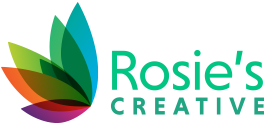
An Introduction to Metadata
 The web today is as crowded as ever, and for businesses or nonprofits seeking a vital signal boost, an investment in search marketing can be a game changer. You’re probably familiar with some of the more outwardly noticeable search marketing strategies – optimizing your site’s content with the right keywords, managing Google My Business and other online directories, and using pay-per-click ads for a quick boost, to name a few.
The web today is as crowded as ever, and for businesses or nonprofits seeking a vital signal boost, an investment in search marketing can be a game changer. You’re probably familiar with some of the more outwardly noticeable search marketing strategies – optimizing your site’s content with the right keywords, managing Google My Business and other online directories, and using pay-per-click ads for a quick boost, to name a few.
But, not all aspects of search marketing are quite so visible. Take your website’s metadata, for instance.
Most users will never look directly at your metadata – unless they’re curious and tech-savvy enough to take a peek at your site’s code, that is – but this bit of “under the hood” optimization is vital to your SEO efforts nonetheless. Embedded into your site’s content in the form of HTML meta tags, metadata is used by search engines to catalogue your website and ensure that it will satisfy users’ search queries.
There are many kinds of meta tags that are relevant to on-site SEO, but let’s take a quick look at just a few of the more important ones…
Title tag
This is one type of meta tag that users will actually see – not on your website itself, but in search results and social media shares. Every page on your site will have its own title tag, and for best results, they should be clear, descriptive, and brief (maximum 55–60 characters).
Meta description
Another meta tag that’s displayed by search engines, the meta description is the short text blurb that accompanies the title in search results. In terms of character count, the meta description can be a bit longer than the title tag (ideal length is about 150–160 characters) but it should still be clear, concise, and relevant.
Headers
Used to give structure to web content, headers help users and search engines alike by creating an easy-to-follow hierarchy of information on each page. Header tags range from h1 to h6, with the h1 tag typically used for the page title, and lower level tags serving as subheads that provide further structure for page content.
Alt text for images
Vital to on-site SEO is image optimization – and crucial to this effort is the alt text tag. Attached to every image on a page, this meta tag provides a brief text description of the visual content. This helps search engines make better sense of your images, and also has accessibility benefits for visually impaired users who may be accessing your site using a screen reader.
For best results, meta tags should be specific, relevant, and should adhere strictly to guidelines regarding length. It also doesn’t hurt to update your tags from time to time, to make sure you’re giving search engines (and users!) the most accurate, current info about your business or organization.
Want to know more about how you can give your business or nonprofit a signal boost on the social web with on-site SEO and other search marketing strategies? Contact Rosie’s Creative today – and remember, with us, your first consultation is always free!
